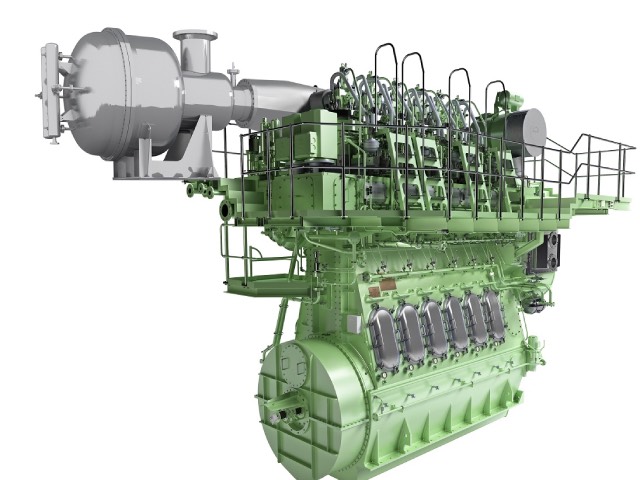MAN Energy Solutions’ Two-Stroke Business has announced that it has surpassed 1,000 orders for secondary-measure, Tier III-compliant, emission-reduction technology for its portfolio of MAN B&W-branded, low-speed engines.
Approximately one-quarter of the orders have been for EGR (Exhaust Gas Recirculation) systems, with SCR (Selective Catalytic Reduction) systems accounting for the remainder. The milestone was passed in early-January 2021 and is built upon references from the company’s portfolio of ME-B, ME-C and MC-C fuel-oil engines. Currently, almost half of all orders have entered active service.
Bjarne Foldager, Senior Vice President and Head of Two-Stroke Business at MAN Energy Solutions, said: “This is a notable milestone that is built on the know-how we have amassed over the past decade or so. Our fully-mature EGR and SCR systems not only achieve Tier III NOx-compliance, but also deliver performance upgrades for engines in terms of increased fuel efficiency and lower, general emissions. As such, our ability to treat a ship as a complete system gives us a clear market advantage that enables us to prioritise environmental considerations.”
NOx solutions
Exhaust gas recirculation (EGR) prevents the formation of NOx by controlling the combustion process, while Selective Catalytic Reduction (SCR) uses a catalyst and an additive to reduce the NOx generated by the combustion process.
Uniquely for the two-stroke sector, MAN Energy Solutions offers both EGR and SCR as proprietary NOx solutions, including both low- and high-pressure variants of the latter. The company has long experience with EGR technology and reported its first order already in 2011, while SCR-HP won its first order in January 2019 and features a drastically reduced reactor size compared to rival systems.









































